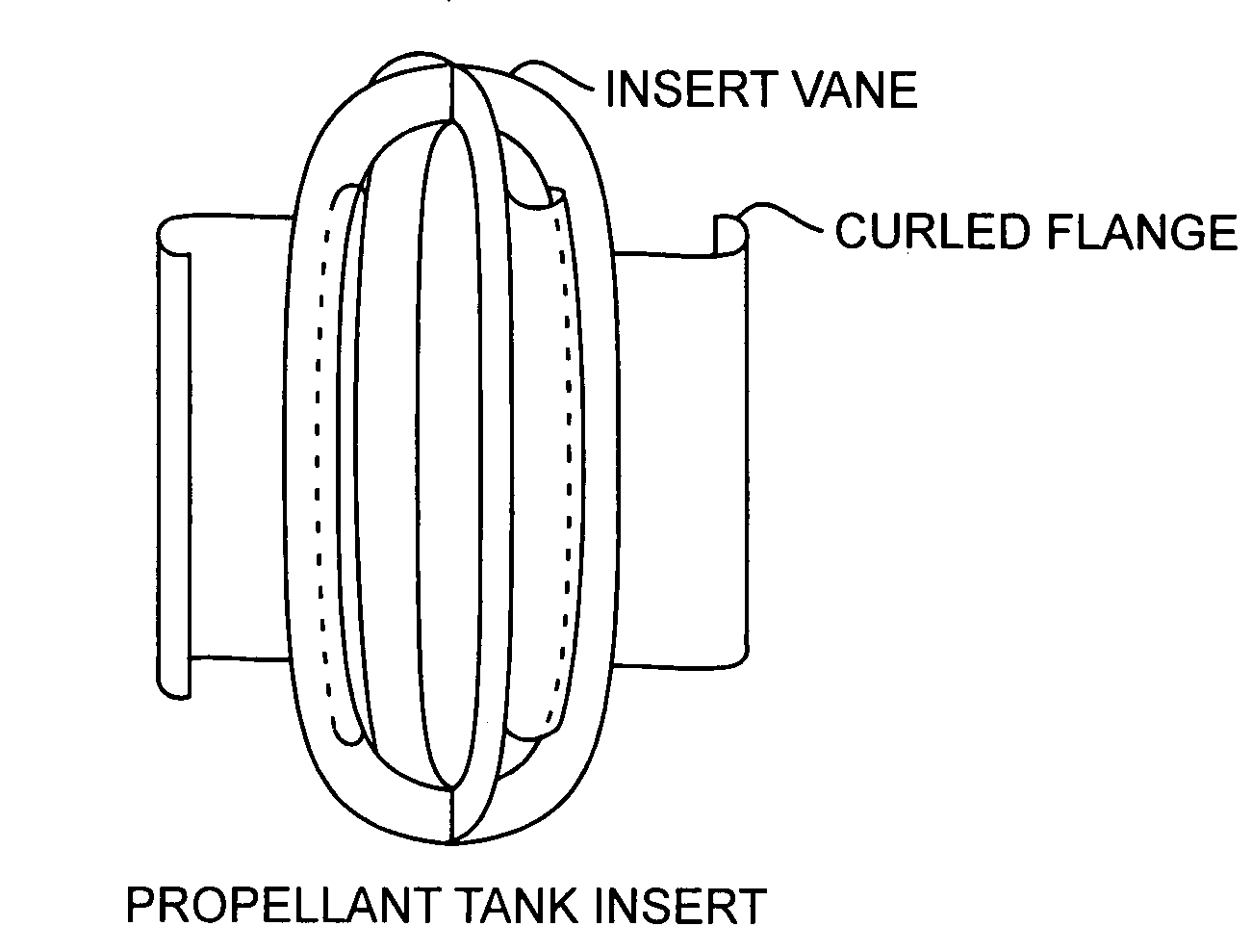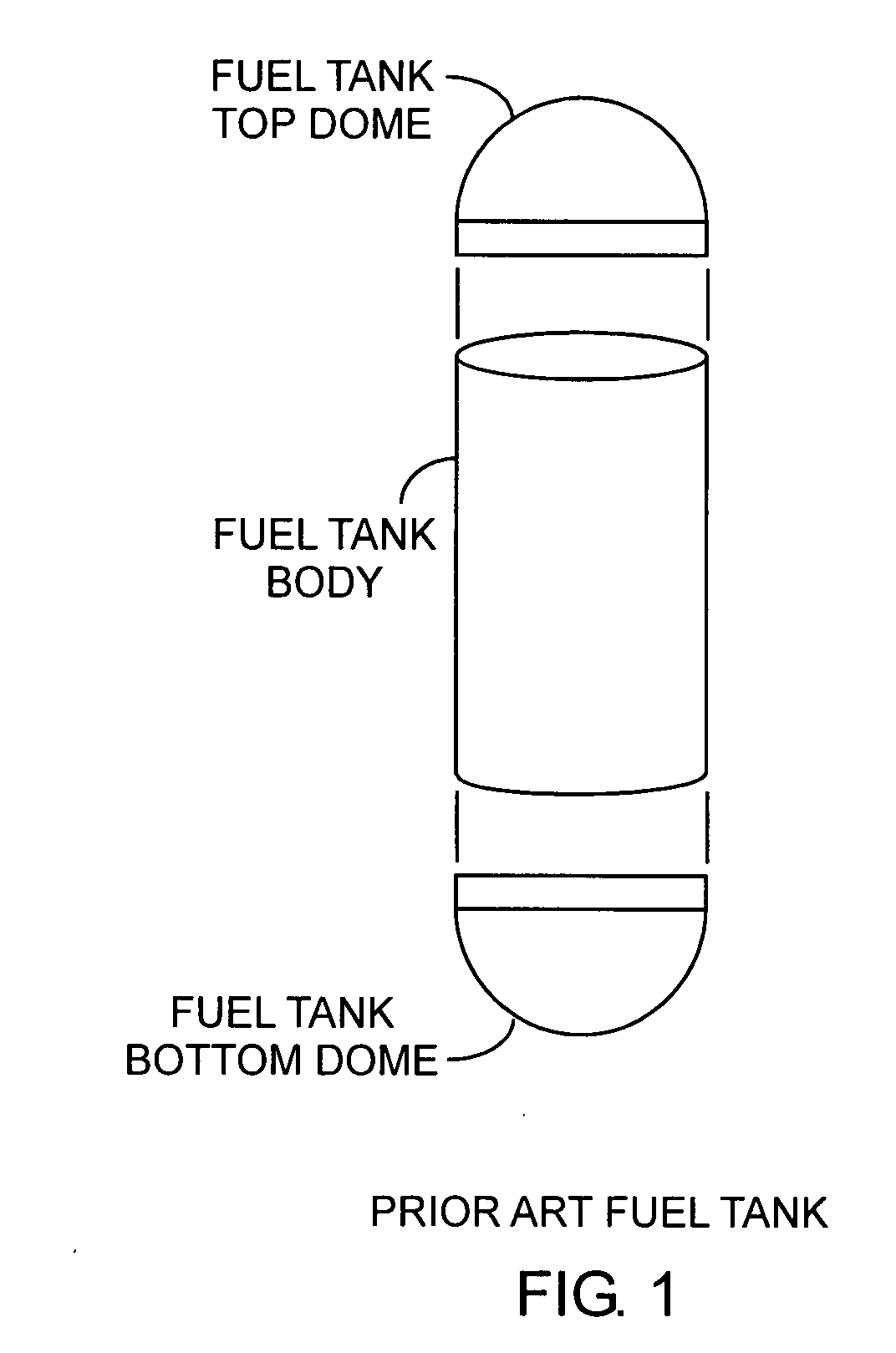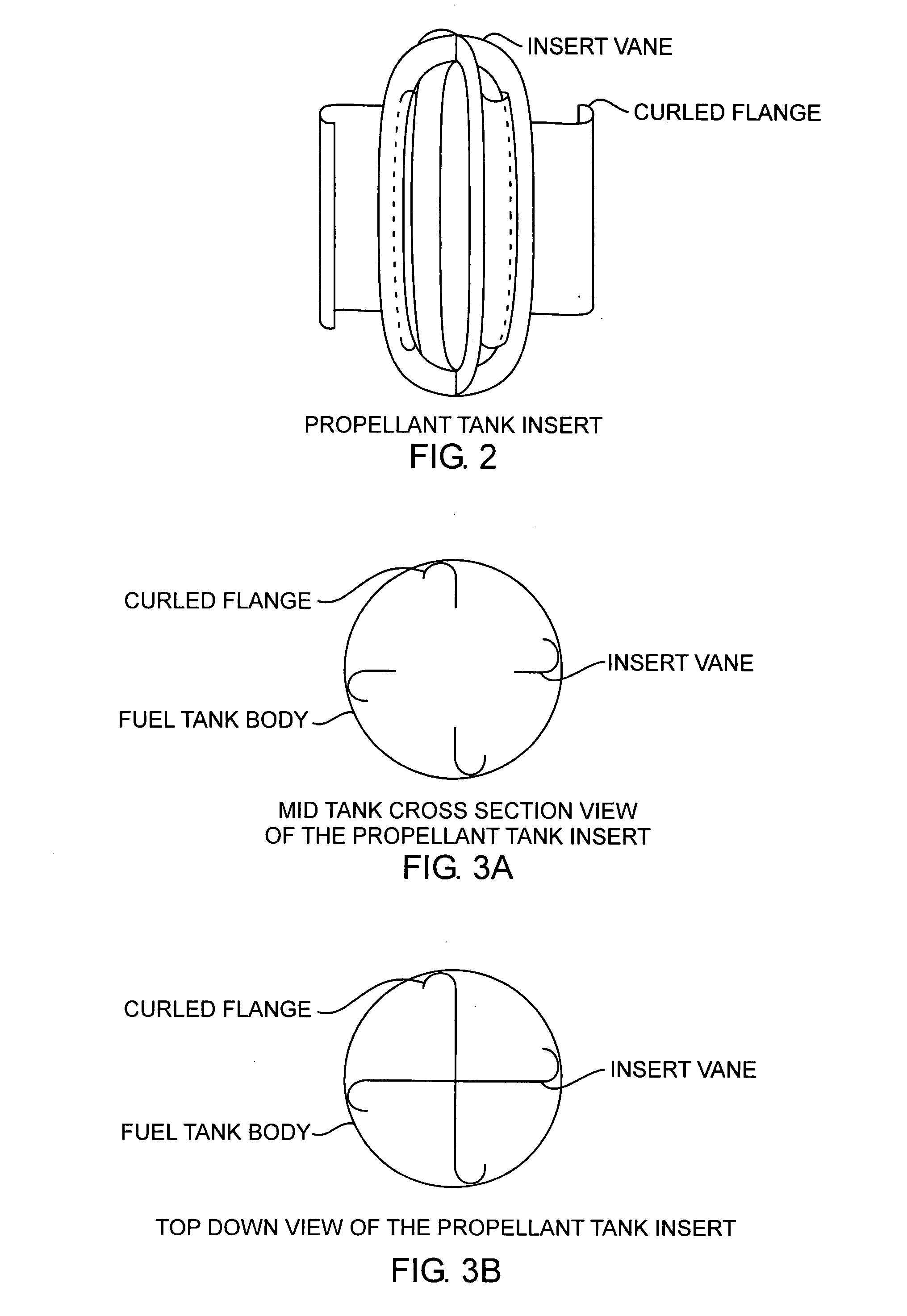Particulate mitigating propellant management tank device
a technology of propellant management and propellant, which is applied in the direction of machines/engines, combustion types, lighting and heating apparatus, etc., can solve the problems of wicking remaining residual fuel, half-oval portions wiggle around within the tank, half-oval portions bending and sag within the tank, etc., to reduce particulate contamination, reduce particulate contamination, and reduce particulate contamination
- Summary
- Abstract
- Description
- Claims
- Application Information
AI Technical Summary
Benefits of technology
Problems solved by technology
Method used
Image
Examples
Embodiment Construction
[0016]An embodiment of the invention is described with reference to the figures using reference designations as shown in the figures. Referring to FIGS. 1 and 2, a propellant tank insert includes two insert vanes coupled together at 90°. Each insert vane is an oval wick having an oval aperture. The oval perimeter of an insert vane matches an oval interior of a fuel tank. The insert vanes are attached to top and bottom dome ends of the fuel tank. The two insert vanes coupled at 90° form four half-oval portions. Each of the four half-oval portions has a curled flange extending outward from the perimeter of the four half-oval portions. The insert vanes are preferably wicks extending the entire length of the tank for maximum wicking.
[0017]Referring to all of the Figures, and more particularly to FIGS. 3A and 3B, the curled flanges are sized to make abutting contact with the interior of the tank along four respective four contact lines running vertically along the interior surface elonga...
PUM
| Property | Measurement | Unit |
|---|---|---|
| diameter | aaaaa | aaaaa |
| surface tension forces | aaaaa | aaaaa |
| size | aaaaa | aaaaa |
Abstract
Description
Claims
Application Information
 Login to View More
Login to View More - R&D
- Intellectual Property
- Life Sciences
- Materials
- Tech Scout
- Unparalleled Data Quality
- Higher Quality Content
- 60% Fewer Hallucinations
Browse by: Latest US Patents, China's latest patents, Technical Efficacy Thesaurus, Application Domain, Technology Topic, Popular Technical Reports.
© 2025 PatSnap. All rights reserved.Legal|Privacy policy|Modern Slavery Act Transparency Statement|Sitemap|About US| Contact US: help@patsnap.com



